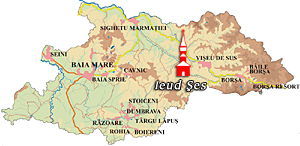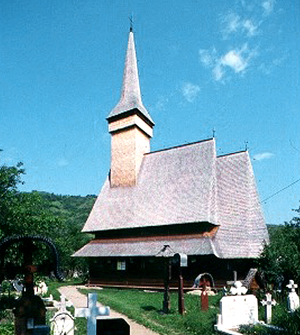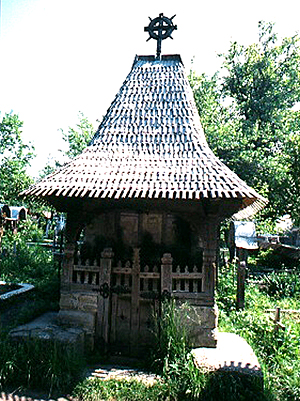Ieud Ses Church

Anul construcţiei: 1718
Locaţia: Ieud Şes se află pe valea Izei, satul însuşi fiind limitat la nord de munţii Ţibleş.
Sumar: Biserica „Adormirea Maicii Domnului” nu este una ortodoxă, ci greco-catolică. Nu a fost niciodată pictată în interior, dar aici este adăpostită o frumoasă colecţie de icoane pe sticlă, făcute în centre cunoscute ale pictorilor de icoane din părţile nordice ale Transilvaniei, multe din ele în centrul lui Necula.

The first mention of the village is in a document of 2 February 1365 that lists gifts of land from the Hungarian King Louis the Great to the local voivode Balc, son of Sas, and his brothers Dragomir and Ştefan. This text specifies places such as Cuhea and Ieud, lands that had been confiscated from Bogdan, the voivode who fled Maramureş, crossed the Carpathians and founded the State of Moldavia. Another mention of the village of Ieud is in a document of 3 December 1419.
One of the most beautiful examples of religious wooden architecture, the church of the Assumption of the Holy Virgin, surrounded by a large cemetery, is placed at the foot of a hill, in the centre of the village.

The church, built in 1718, follows the usual features of such a construction, its plan and structure being quite similar to the church in Ieud Deal. The tower, though, of an appreciable stature, the apparent massiveness of the roof slopes, and the well thought composition of the volumes stress the height of the edifice. These are all features of what has been named as the Gothic of Maramureş, and indeed the church is quite frequently referred to as “the wooden cathedral of Maramureş”.
Apart from icons, there are also pieces of religious furniture and old books made in Râmnic, Blaj, Buzãu, Bucharest, and Iaşi.
It was never painted inside, but there is a beautiful collection of icons on glass, made in famous centres of icon painters in the northern parts of Transylvania, many in the centre of Necula.



